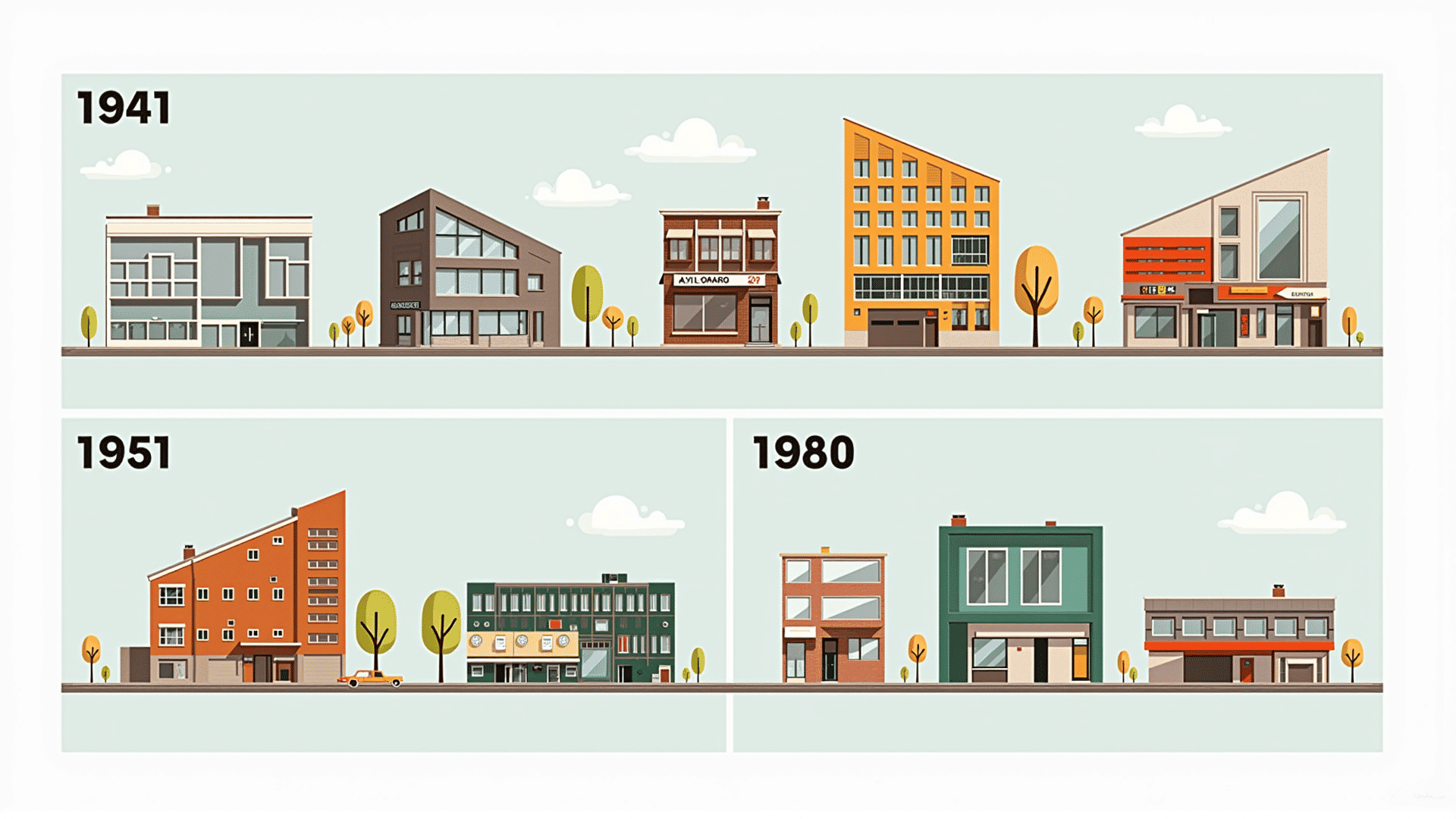From the post-war reconstruction to the burgeoning modernism of the late 20th century, the period between 1951 and 1989 marked an era of significant transformation in Dutch architecture. This time frame witnessed an evolution from practical, restorative designs to bold expressions that embraced innovation and international influences.
After the devastation of World War II, the Netherlands faced a massive rebuilding task. The early 1950s buildings were primarily focused on addressing housing shortages caused by the war. This period favored pragmatic designs, using simple forms and functional layouts to quickly meet essential needs. The style was characterized by a blended use of traditional Dutch designs and newfound efficiency.
As the 1960s emerged, the influence of modernist ideas began to manifest more prominently. Architects sought to redefine urban living through clean lines and minimalistic forms. The works of Le Corbusier and the Bauhaus movement heavily inspired Dutch designers, resulting in structures that eschewed ornamentation in favor of functionality. Iconic buildings, often constructed with concrete and steel, began to populate cities, reflecting a move towards structural rationalism and industrial architecture.
The 1970s brought experimentation and a questioning of modernist ideals, leading to the rise of brutalism and the introduction of more human-centered designs. Architectural thought during this time emphasized the social role of buildings, viewing them not just as objects, but environments that impact community life. The decade saw a departure from rigid geometries towards more organic and adaptive forms. Interest in creating sustainable, community-focused environments also gained momentum, with architects starting to embrace ecological considerations in their designs.
Influences from across the globe began permeating Dutch architecture in the 1980s. As the world grew more interconnected, international styles merged with local traditions, resulting in postmodern architecture. This era was characterized by its eclectic approach, where historical elements and modern innovation coexisted. Buildings from this period often included playful elements, vibrant colors, and a mixture of materials. This stylistic shift was a response to the perceived coldness of modernist austere environments, bringing a renewed sense of identity and complexity to architectural expressions.
Throughout 1951 to 1989, architectural transformation in the Netherlands reflected broader social, cultural, and technological changes. From the functional structures of the post-war era to the imaginative postmodern designs of the late 20th century, this period formed a foundation for the diverse and dynamic architectural landscape that defines the Netherlands today. Dutch architects navigated these decades with a responsive adaptability, consistently pushing the boundaries of how the built environment could reflect and serve the needs of society.
